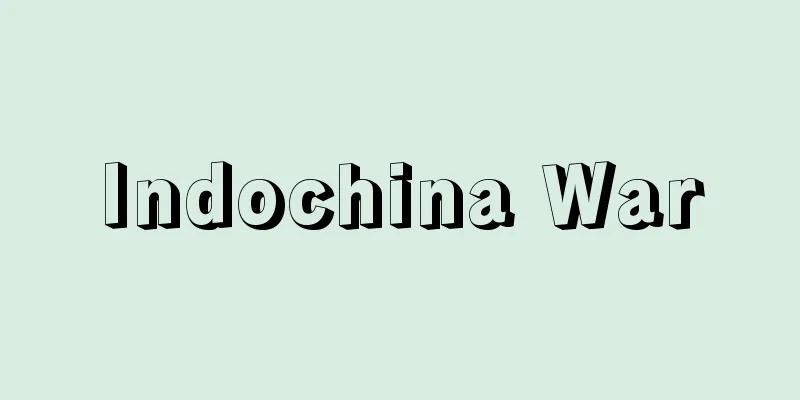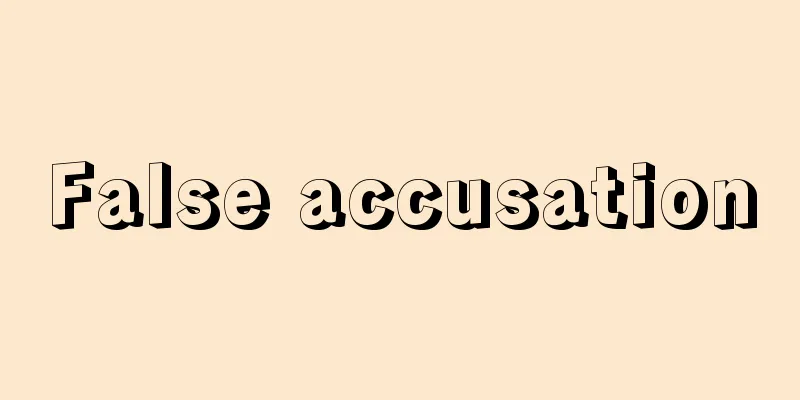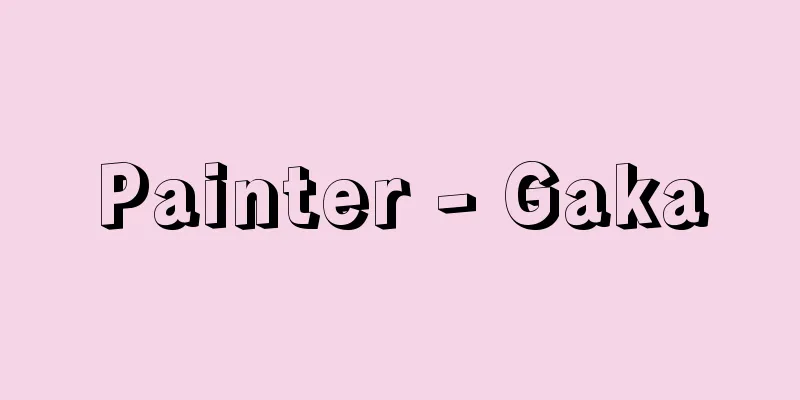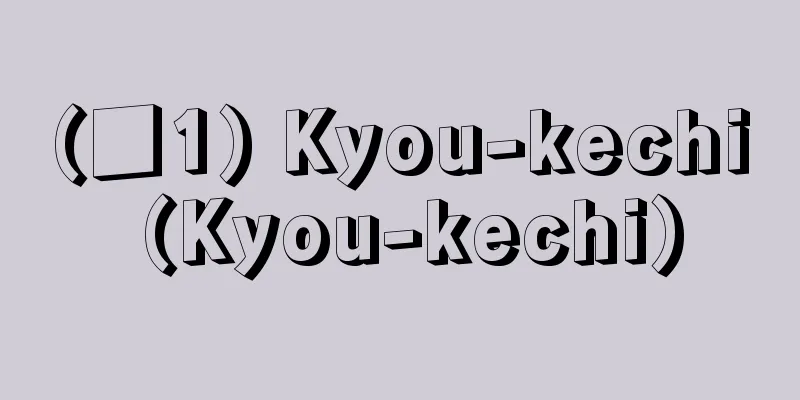Indochina War

|
The Indochina War had three faces. The first was a colonialist war in which the French side tried to recover their former colonies. The second was from the Vietnamese perspective, and was a war to protect the sovereignty and independence of an ethnic state that had already declared independence (September 2, 1945) and was in the process of establishing a new national system. Vietnam created an ethnic united front organization called the Viet Minh (League for the Independence of Vietnam) under Ho Chi Minh, and fought while building a socialist state. The third was from the perspective of international politics after World War II, and was a local war at a time when the US-Soviet conflict was finally taking shape as the Cold War. France fought this local war on behalf of the West, but behind them was the United States, which supported France by sending large amounts of weapons as part of its policy of containing communism. However, this hardened the communist forces and intensified the Cold War. The Indochina War can be divided into three phases. The first phase (December 1946 to December 1947) was the offensive period for the French side and the defensive period for the Vietnamese side. During the Pacific War, Indochina was under the control of the Japanese military, but after Japan's unconditional surrender, based on the decision of the Potsdam Conference (August 2, 1945), the northern half of Vietnam north of the 16th parallel was occupied by the Nationalist government forces, and the southern half south of the line was occupied by the British Commonwealth forces, and then it was transferred to French control. France sent additional troops and attempted to quickly restore military power to its colony of Indochina. This naturally created a backlash from the Vietnamese side, as Vietnam had already claimed the establishment of the Democratic Republic of Vietnam. Thus began armed conflict between the two armies, with the French side shelling Haiphong on November 20, 1946, and attacking the capital, Hanoi, on December 19. The Vietnamese, lacking in resources, retreated from the main areas of the Tonkin Delta and took up base in the mountainous region of the Viet Bac region, where they opposed the French forces primarily through guerilla warfare. Then came the second phase (January 1948 to September 1950). The Vietnamese gradually built up strength, and the balance between Vietnamese and French military power was achieved. This was the equilibrium phase. Then came the third and final phase (September 1950 to July 1954). This was the stage of the general counterattack. The Vietnamese launched an aggressive offensive, recapturing French positions one after another, eventually driving the French army into Dien Bien Phu and forcing them to surrender. This was on May 7, 1954. Thus, on July 21 of the same year, the Geneva Agreement on the Cessation of Hostilities in Vietnam, Laos and Cambodia was signed in Geneva, and all French troops withdrew from Indochina, bringing an end to French colonial rule. During the eight-year war from 1946 to 1954, France mobilized 556,000 troops at its peak, spent $8.12 billion on the war, and withdrew from Indochina with 172,000 casualties. The United States provided France with $2.635 billion in aid, which was more than 30% of France's total war expenditure. In response, Vietnam (Democratic Republic of Vietnam) deployed 291,000 troops at its peak on the front line, fought with all its might, and won. As a result, Vietnam effectively gained control of most of Indochina. However, under the Geneva Agreement, Vietnam was divided in two by the 17th parallel, and the Vietnamese (Democratic Republic of Vietnam) only gained control of the area north of the line, while the area south of the line was under the jurisdiction of the Saigon regime (President Ngo Dinh Diem). If the Indochina War had been a French colonialist war and a Vietnamese war of national independence, the defeat of France and the victory of Vietnam would have led to the unification and independence of Vietnam. The reason this did not happen was probably because the Indochina War was a local war during the Cold War. The United States leveraged the French war and tried to limit its control over Vietnam to north of the 17th parallel, and furthermore created SEATO (Southeast Asia Treaty Organization) in September 1954 and included Indochina within its defense sphere in order to thoroughly prevent the further advance and expansion of communist forces. This was the development of a policy to contain communism. For this reason, in order to complete the policy of containing communism, the United States had to pursue this policy with its own power, and Vietnam needed another battle to achieve the unification of Vietnam. This was the next Vietnam War. [Shizuo Maruyama] "People's War, People's Army" by Vo Nguyen Giap, translated by Mabo Junichiro (1965, Kobundo) " "Modern History of Indochina" by Ellen Hammer, translated by Kawai Shin (1970, Misuzu Shobo)" " The Sayings of Ho Chi Minh, edited by Bernard B. Phalle, translated by Uchiyama Satoshi (1968, Kawade Shobo Shinsha) " "The Story of Indochina" by Maruyama Shizuo (1981, Kodansha) [References] |Source: Shogakukan Encyclopedia Nipponica About Encyclopedia Nipponica Information | Legend |
|
インドシナ戦争は三つの顔をもっていた。第一はフランス側が旧植民地を回復しようとする植民地主義戦争である。第二はベトナム側からみてのもので、すでに独立を宣言し(1945年9月2日)新しい国家体制の整備を急ぎつつあった民族国家の主権と独立を守るための戦いであった。ベトナムがホー・チ・ミンの下にベトミン(ベトナム独立同盟)という民族連合戦線組織をつくり、社会主義国家を建設しつつ戦ったことである。第三は第二次世界大戦後の国際政治からみてのもので、インドシナ戦争は、米ソ対立がようやく冷戦の形を整えてくる時代の局地戦争であったことである。この局地戦争を、西側を代表して戦うのはフランスだったが、その背後にはアメリカがあり、アメリカは共産主義封じ込め政策の一環としてフランスに大量の兵器を送って支援した。しかし、それは共産主義勢力を硬化させ、冷戦を激化させることになった。 インドシナ戦争は三つの段階に分かれる。第1段階(1946年12月~47年12月)はフランス側の攻勢期、ベトナム側の守勢期(防御期)である。インドシナは太平洋戦争中、日本軍の支配下に置かれたが、日本の無条件降伏後、ポツダム会談の決定(45年8月2日)に基づいて、北緯16度線以北のベトナムの北半分を国民政府軍、同線以南のベトナムの南半分をイギリス連邦軍が占領したあと、フランスの管理に移された。フランスは兵力を増派して、植民地たるインドシナの早急な武力回復を図った。これは当然にベトナム側の反発を生んだ。ベトナムはすでにベトナム民主共和国の成立を主張していたからである。かくて両軍の武力衝突が始まり、フランス側は46年11月20日ハイフォンを砲撃、12月19日首都ハノイを攻撃した。力の足りないベトナム側はトンキン・デルタの主要地区から後退し、ベトバク地区の山岳地帯に拠(よ)り、もっぱらゲリラ戦によってフランス軍に対抗した。 ついで第2段階(1948年1月~50年9月)に移る。ベトナム側は徐々に力を蓄えて、ベトナム、フランスの戦力にバランスがとれる。均衡の段階である。やがて最後の第3段階(50年9月~54年7月)がくる。総反攻の段階である。ベトナム側は積極的攻勢に出てフランス側の陣地を次々に奪回し、ついにディエン・ビエン・フーにフランス軍を追い込み、降伏させた。54年5月7日である。かくて同年7月21日、ジュネーブでベトナム、ラオス、カンボジアにおける敵対行為の終止に関する協定(ジュネーブ協定)が締結され、フランス軍はインドシナからことごとく撤退し、フランスの植民地支配に終止符が打たれた。 1946年から54年に至る8年間の戦争で、フランスは最高時55万6000人の兵力を動員し、81億2000万ドルの戦費を使い、17万2000人の死傷者を出してインドシナから総退場した。アメリカはフランスに対し26億3500万ドルの援助を与えた。これはフランスの全戦費の30%余にあたる。これに対しベトナム(ベトナム民主共和国)は最高時29万1000人の兵力を第一線に配置し、総力をあげて戦い、勝利した。これによって、ベトナムはインドシナの大半を事実上コントロール下に入れた。ところがジュネーブ協定では、ベトナムは北緯17度線をもって二分され、ベトナム側(ベトナム民主共和国)は同線以北の支配権を得たにとどまり、同線以南はサイゴン政権(大統領はゴ・ジン・ジエム)の管轄下に入れられた。インドシナ戦争がフランスの植民地主義戦争、ベトナムの民族独立戦争だけであったならば、フランスの敗北、ベトナムの勝利によってベトナムの統一と独立は実現したであろう。そうならなかったのは、インドシナ戦争が冷戦下の局地戦争だったからであろう。アメリカがフランスの戦いにてこ入れし、ベトナムの支配力を北緯17度線以北に限定しようとし、さらに1954年9月SEATO(シアトー)(東南アジア条約機構)をつくって、その防衛範囲にインドシナを入れたのは、共産主義勢力のそれ以上の進出と膨張をあくまでも阻止するためであった。まさに共産主義封じ込め政策の展開である。それだけに、共産主義封じ込め政策を完成させるためには、アメリカは自らの力でこの政策を追求しなければならなかったし、ベトナムの統一を達成するためにはベトナムはもう一つの戦いが必要であった。それが次のベトナム戦争であった。 [丸山静雄] 『ボー・グェン・ザップ著、真保潤一郎訳『人民の戦争・人民の軍隊』(1965・弘文堂)』▽『エレン・ハマー著、河合伸訳『インドシナ現代史』(1970・みすず書房)』▽『ベルナール・B・ファル編、内山 敏訳『ホー・チミン語録』(1968・河出書房新社)』▽『丸山静雄著『インドシナ物語』(1981・講談社)』 [参照項目] |出典 小学館 日本大百科全書(ニッポニカ)日本大百科全書(ニッポニカ)について 情報 | 凡例 |
<<: Indian Jabok - Indian Jabok
Recommend
Commercial law - Shoho
The Significance of Commercial Law [1] Formal mea...
United Arab Republic; UAR
A United Republic formed by Egypt and Syria in Feb...
Hikan - subordinate
Originally written as 'hikan', it meant b...
Analog Instrument - Analog Instrument
Quantities that are continuous and can take on any...
Qasim Khan (Astrakhan)
...Kipchak Khanate was one of the successor state...
habitat humaine
…The French term établissement humaine was used t...
legal pluralism
...Accumulation of research and studies has revea...
Diphosphoric acid
…The chemical formula is H 4 P 2 O 7 . It is also...
internally blown flap
… [Power Drift System] In propeller aircraft, the...
Pool
(1) A type of billiards. A game in which players u...
barbat
…The pipa, known in China since the Han dynasty, ...
Multiplier theory
A theory that clarifies how much income will incr...
Kuugenikkushu - Kuugenikkushu
This is the diary of Gido Shushin, a Five Mountai...
Bent-necked fish - Bent-necked fish
...In marine species, the forelimbs are paddle-li...
Haldane,JBS (English)
…British-born geneticist and physiologist. Born t...









